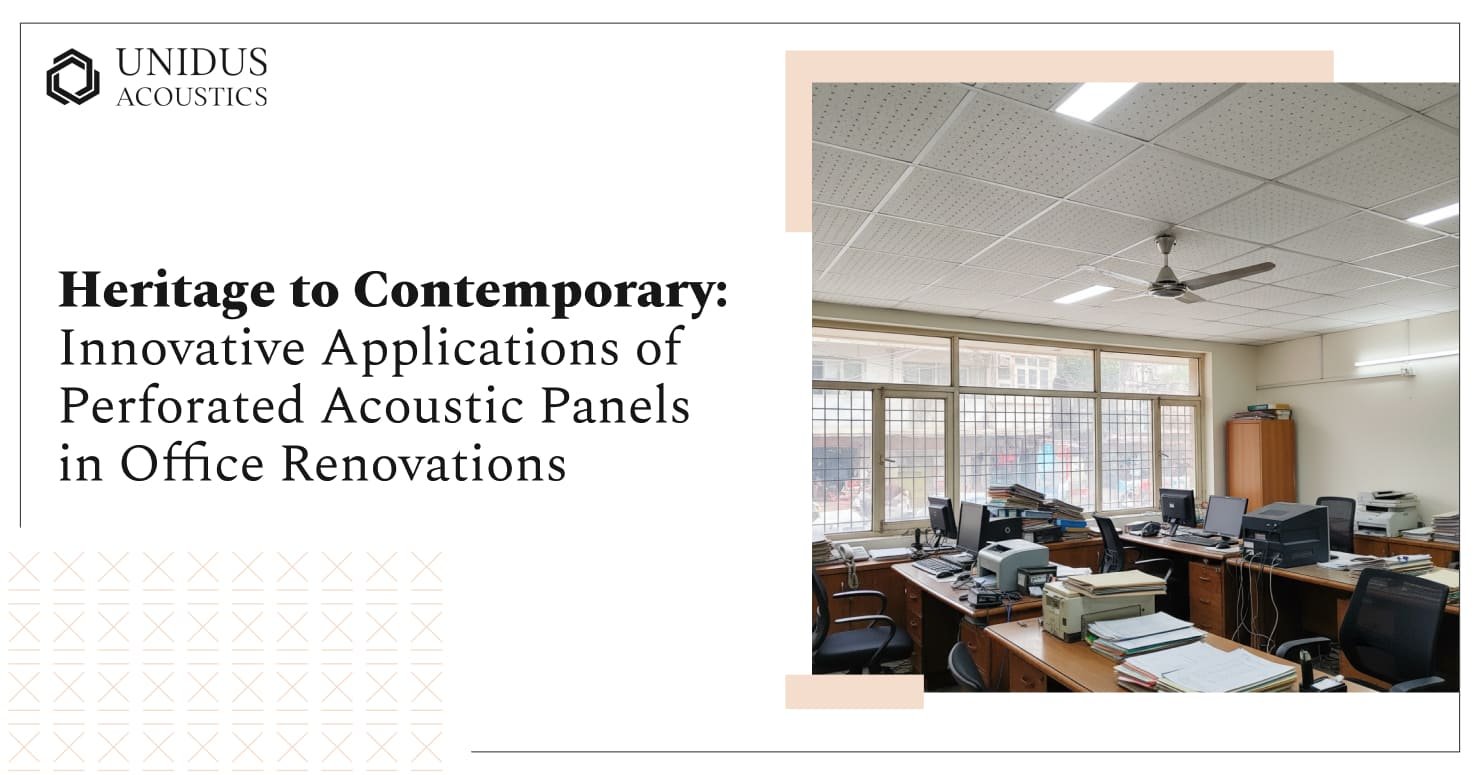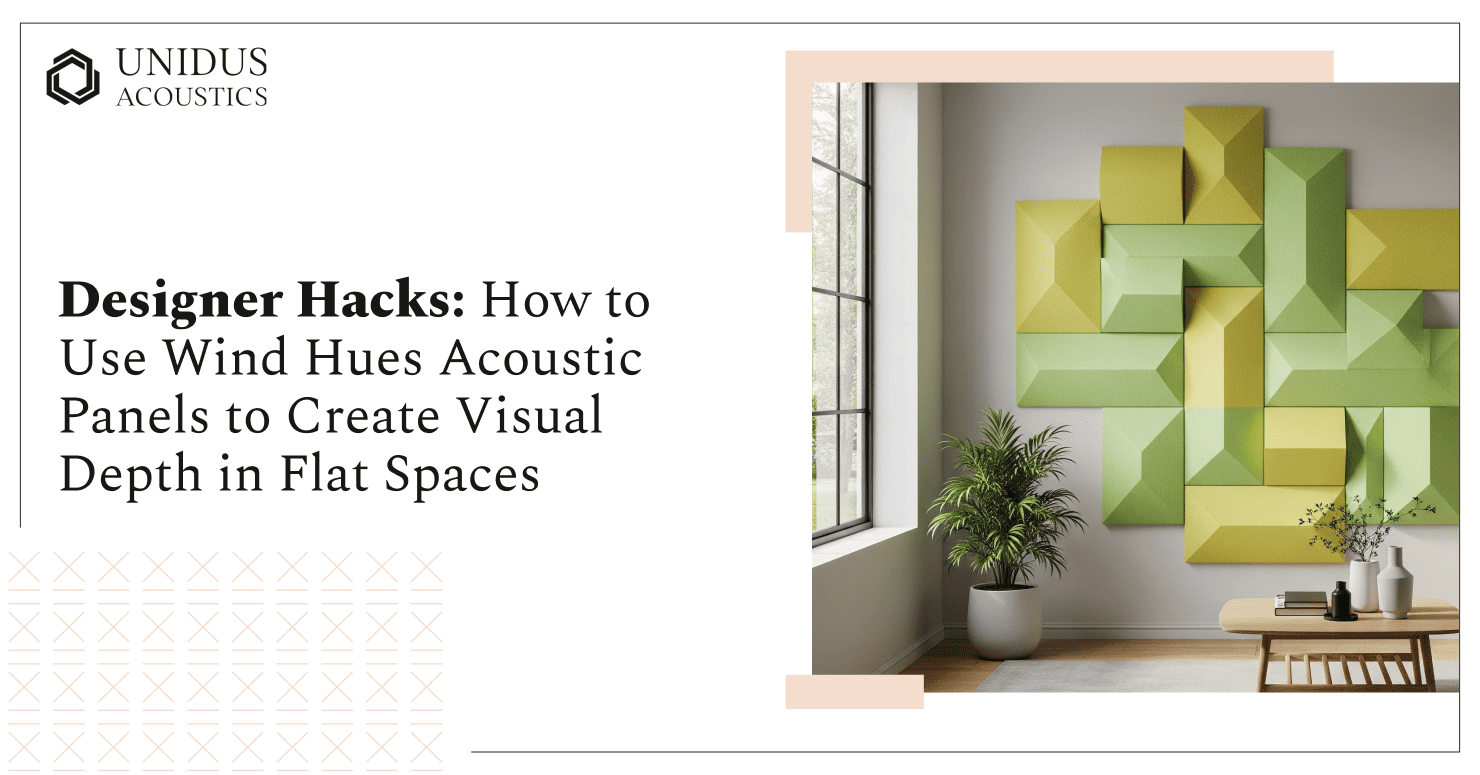If you work under lofty plaster ceilings with tall windows, or in a glass-heavy contemporary floorplate, you’ll know how easily sound ricochets around the room. Conversations get muddy, meetings feel strained, and your focus slips easily among this chaos.
Perforated acoustic panels are a simple solution for this issue. It is a practical, design-forward way to calm the noise without dulling the character of your space.
In this article, we will explain why office acoustics matter.
Why Office Acoustics Matter?
Noise is the number-one complaint in open offices, and it’s not just a minor annoyance. Studies show that people working in open-plan offices lose about 86 minutes of productive time every day because of noise distractions.
Improving speech clarity and reducing reverberation is therefore a direct productivity play as well as a wellbeing upgrade.
By absorbing and diffusing sound, well-designed acoustic treatments cut background noise, reduce meeting fatigue, and improve comprehension. This is particularly important in video-first working, where speech clarity makes or breaks hybrid meetings.
Acoustic solution providers help you improve the visual appeal of a workplace, too. Perforated acoustic panels, in particular, have emerged as an effective and stylish solution for office noise issues.
Acoustic Challenges in Heritage Office Spaces
Historic offices are beautiful but acoustically unforgiving: high ceilings, hard plaster, timber or marble floors, and generous glazing all reflect sound. In protected structures, you can’t rip out fabric or add bulky cladding without ruining the building’s character.
Imagine trying to hold a meeting in a Victorian-era boardroom. The aesthetic may be stunning, but every word might reverberate.
Using perforated acoustic panels allows designers to retrofit sound absorption in a subtle, reversible way. The right make-up (panel, perforation, and backing) can be tuned to speech-critical frequencies without altering the architectural intent.
To put this into context, let’s first look at what we mean by a perforated acoustic panel.
What Are Perforated Acoustic Panels?
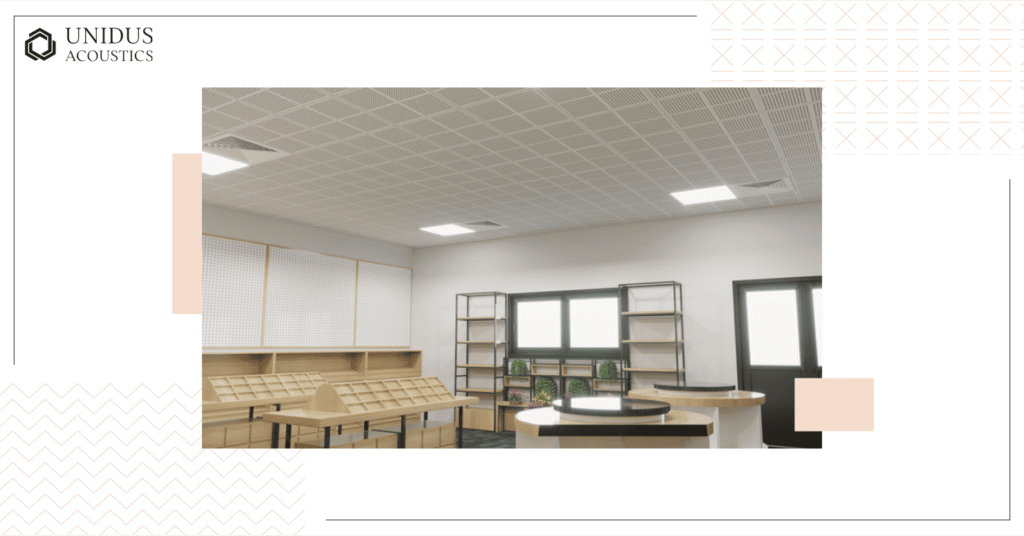
Perforated acoustic panels are rigid boards or tiles punctured with a regular pattern of holes or slots. The perforations allow sound waves to pass into an acoustic core (such as mineral wool or high-performance felt), where the energy is dissipated as heat. This helps reduce echo and lower overall noise levels.
Advantages of Perforated Acoustic Panel
- Customise hole size, shape, distribution, and backing materials to target specific sound frequencies (e.g., mid-range speech).
- Sound passes through perforations into acoustic foam or fabric backing, reducing echo and improving speech intelligibility.
- Acoustic panels are available in wood, metal, fiberboard, or plaster with various finishes and patterns for aesthetic appeal.
- Provides sound absorption without bulky or unattractive materials, integrating noise control into stylish surfaces.
- Perforated metal panels offer a sleek look and long-lasting durability, ideal for contemporary office spaces.
For example, Unidus Acoustics’ Perforated Metal Ceiling tiles are 595×595 mm in GI or aluminium with 0.50/0.60 mm thickness options, available in square or rectangular edges and custom colours. These are ideal for modular ceilings in modern offices and corridors.
Unidus Acoustics designs and manufactures acoustic systems for offices across India, with 40+ years of expertise and a consultancy-to-installation service model. That matters when you’re balancing heritage constraints, MEP coordination, and tight programmes.
Crucially, we support custom sizing, colours, and geometries across ceiling and wall systems, enabling brand-aligned palettes (including Earth-hued tones) and one-off feature elements that still meet acoustic briefs.
Acoustic Panels as Design Elements
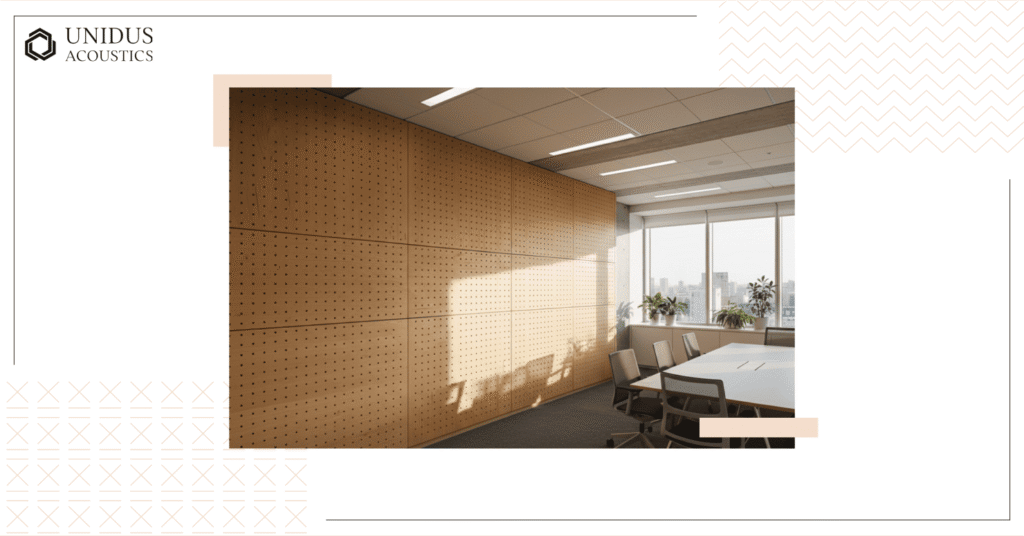
As Houzz magazine notes, “Gone are the days when perforated acoustic panels were a blemish on the face of interior design. These days, they are more streamlined than ever.”
A popular way to use them is by creating patterns or textures on walls. For example, a conference room wall covered in wooden panels with geometric designs looks stylish and helps control sound at the same time.
Ceilings are another great place to get creative. Instead of a plain suspended ceiling, you can use perforated ceiling tiles or panels. They add character and cut down echo.
With so many finishes and designs available, these panels can fit almost any style. You can choose from colors, wood veneers, printed graphics, or even custom shapes.
Innovative Applications in Office Renovations
The versatility of perforated acoustic panels allows for creative and innovative applications in office spaces. It includes:
Suspended Acoustic Mosaics
Mix perforated metal tiles with colour-fast acoustic felt backers in a mosaic arrangement to tune reverberation while framing skylights and heritage cornices. Stitch lines align with the T-grid for effortless maintenance.
Acoustic Lighting
Ceiling clouds and linear pendants fabricated from sound-absorbing materials. It serves two purposes: it lights the task plane and soaks up chatter. Unidus Acoustic Ceiling Lighting integrates acoustic panels with luminaires, so you don’t have to sacrifice lux levels to get the room quiet.
For guidance, check Unidus Acoustics’ article on acoustic lighting solutions for open offices.
Acoustic Dividers and Partitions for Open-plan Zones
Half-height, free-standing partitions clad in perforated panels create semi-private focus bays while allowing sightlines for supervision. Combine with felt-lined cores to block cross-talk in benching areas. Unidus Acoustics’ portfolio covers dividers and modular ceiling interfaces that keep the language consistent end-to-end.
Stylish wall Treatments
Swap plain paint for perforated wood or grooved wall panels to add rhythm and depth to boardrooms. Vertical stripe patterns lengthen the space visually and target flutter echoes. Fluted Panels and wall panel ranges can create timber-rich, speech-friendly rooms.
Overhead Baffles and Clouds for Volume Control
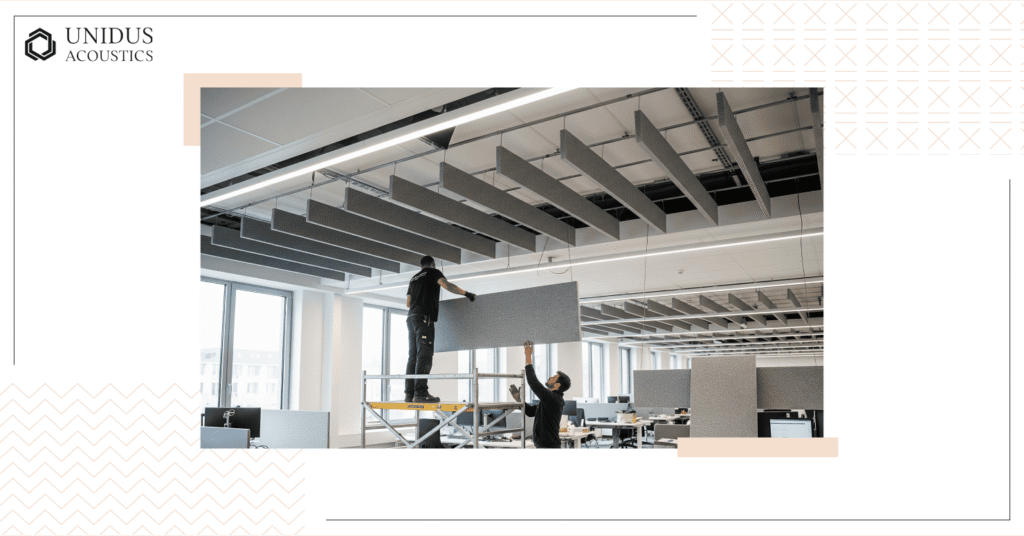
In double-height spaces, ceiling baffles and floating clouds tame long decay times without closing the room in. Baffles can be patterned, curved, or embossed for brand moments; clouds hover above meeting tables to boost clarity on calls.
Bridging Heritage Aesthetics with Improved Productivity, Privacy, and Comfort
The investment in perforated acoustic panels pays off in the day-to-day experience of office users. Installing them improves the privacy and productivity in the office space.
For knowledge workers, a quieter office helps you focus better and feel less tired. Research has linked excessive office noise to increased heart rate and stress. Conversely, reducing noise can help lower stress levels and improve cognitive function. This boosts productivity and accuracy.
There is a privacy benefit, too. Acoustic panels stop sound from traveling too far. This means your conversations don’t disturb others. It’s especially important when you need to talk about something confidential.
Final Thoughts
The versatility of perforated acoustic panels means they can be tailored to every environment. It offers surfaces that are as aesthetically pleasing as they are acoustically effective. As you plan an office renovation, consider making acoustics a foundational element of the design.
Perforated acoustic panels are suitable for the most elegant heritage interiors and the trendiest modern offices alike. A well-placed perforated panel can allow a team in a converted old chapel to brainstorm freely without echoes.
Working in a dated building? Book a free consult today and see how our perforated panel layout refreshes the look and trims background noise for clearer meetings.

